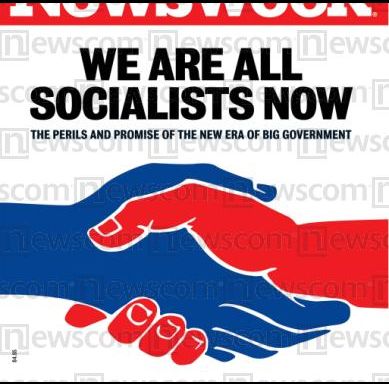If you are a lender to the federal government, your money is all there, right in your T-security account at the FRB. All of it. Every cent. So is China's money, Europe's money, Japan's money [the Social Security Trust Funds' money]-- every one of those 12 trillion dollars of federal "debt," all sit safely in FRB T-security accounts.
And despite what the fear mongers tell you, you don't owe a penny of it. Nor do your children, nor do your children's children. The FRB owes it all, and it's all there in T-bill accounts.
So, yes, Social Security could be "fixed" with a few keystrokes (or a two-trillion dollar coin) . It doesn't require an argument about whether and how much to raise payroll taxes.
Unless it does, because the ideological and political and legal and institutional structure says it must.
Jekyll and Hide
Of course, what MMT presents is, I think, an accurate model of how money works, based on the undeniable fact of fiat currency and monetary sovereignty, and of the monetary and fiscal policy that fact implies--i.e., economically-logically demands. We all know, as Bostick's remarks above imply, that this is not what American monetary and fiscal policy looks like.
American monetary policy is structured, and forced to function, around economically illogical confusions that obscure these facts and impede our understanding of how to promote spending for progressive purposes.
The United States government, under the archaic legacy of the gold standard and the controlling influence of the plutocracy, has constructed a scheme of institutions and laws that set up a complicated, unnecessarily antagonistic relation between fiscal and monetary policy, and put the latter into the hands of private, profit-making interests. A lynchpin of this scheme is the Federal Reserve Bank.
The Fed is a curious, chimeric entity. Most of the public believes, and its name implies, that it's part of the federal government, but it is defined as "an independent central bank." That means that, although it was established, and can be eliminated by, Congress, and its Board of Governors is appointed by the President and approved by Congress, its actions "do not have to be approved by the President or anyone else in the executive or legislative branches of government." It's another example of democratic pretense: Its Governors are Congressionally-appointed dictators. As Alan Greenspan famously proclaimed: "[T]here is no other agency of government which can overrule actions that we take."
The Federal Reserve System was planned in a secret meeting (because "knew their ties to Wall Street could arouse suspicion about their motives") of plutocrat bankers and politicians, arranged by J.P. Morgan in 1910 at the Jekyll Island Club off the Georgia coast--called at the time, --the richest, the most exclusive, the most inaccessible" club in the world. It became law in 1913. Its public purpose was to centralize and rationalize bank funding, in order to prevent the recurrent Panics that had embroiled the country. Its other purpose was to keep monetary policy under the control of the plutocrats' banks, and out of the hands, and the sight, of the public. The Fed likes the air of wizardry and mystification that befogs the public mind about its operations. It does not want the public to know what it knows about how money works. As Henry Ford said.
The Fed is actually a consortium of private banks--its "members," who own its stock and receive a 6% dividend from its activities. To start with. They also get interest on the 10% reserves they hold, which Ellen Brown calculates nets them "at least $700 billion annually" in public money. So, the Fed is " a servant to the banking system while also trying to be a public purpose servant. It has, in effect, two masters by design."
To give the simplified version of a complicated set of financial relationships: Its nominal master, the US government, has ceded to the Fed the authority to create money via debt instruments (Treasury securities); and the Fed has in turn passed that authority to its effective master, the private commercial banks, which create money through interest-bearing loans. In the American monetary system, it is not the people's government, but the bigamist Fed and its member banks that create money, and money is debt.
As Positive Money explains: "Most of the money in our economy is created by banks...Banks create new money whenever they make loans. 97% of the money in the economy today is created by banks, whilst just 3% is created by the government."
Next Page 1 | 2 | 3 | 4 | 5 | 6 | 7 | 8 | 9 | 10
(Note: You can view every article as one long page if you sign up as an Advocate Member, or higher).





